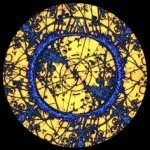Blogs
Our community blogs
-

- 40
entries - 18
comments - 7000
views
Recent Entries
Latest Entry
A Blog Post about Blog Posts
For my final trick, a blog post about blog posts! The assignment of blog posts, 10 a quarter for four quarters, has been a great way to make us think. It seems fitting to reflect on the blog post process itself with this fortieth post. I really think this is a good idea, whenever I sit down to do a post I enjoy the creativity involved, and reflecting on what I've learned makes me appreciate the scope of the class all the more. I definitely recommend that the blog posts remain as an assignment, and I am glad to have had the chance to think about physics on my own and through that process get to know it better.
- 40
-

- 5
entries - 6
comments - 3407
views
Recent Entries
 Latest Entry
Latest Entry
Electricity and Music
Electricity and music both are connected not only through electric instruments but through our brain. In the second video it compares the brain to an orchestra and shows how even sitting down relaxed your brain is constantly moving. I also have had EEGs in order to monitor how my brain works during a seizure. Once I got to see a picture of my brain and all the electric currents going to all sorts of areas of my brain. The seizure would start in two different places in my brain then continue seemingly randomly until it ends.
We don't exactly know what causes my seizures but one problem my family has is that our brains always move to fast for us to do anything with a lot of the ideas we have. The first video on the other hand reminds me of my brother and how he was electrocuted at a young age. I wonder if we had any detectors connected to him how fast the frequencies would be going then. I think my favorite part of the video was when you could hear the sound because it added a whole different dimension to how your body can help transfer different frequencies.
With all the sound you could hear from his detector it makes you wonder what happens when you are using your cell phone. What frequencies go through your body? Can this really cause cancer? These questions and so much more are constantly being asked like how does are neurons know how to organize themselves in the brain when no one instructs them where to go. The brain is one thing I can't wait for the scientists to understand better so we can understand the miracles that happen inside us everyday.
- 5
-

- 5
entries - 11
comments - 11553
views
Recent Entries
Latest Entry
Physics of a Toaster
 This is completely random, but as I was pondering ideas for a blog I discovered that there is a lot of physics involved in toasters!
This is completely random, but as I was pondering ideas for a blog I discovered that there is a lot of physics involved in toasters! 
Most appliances that heat up, such as hair dryers, irons, and toasters, work by changing electrical energy into heat energy. Toasters are plugged into a source of electricity. From that source, the electric current runs down the wire and into the toaster. The inside of each appliance contains loops of different metals. The electricity does not easily flow through the metals. The metals slow down the electrons and hold up the current, which is resistance. Resistance is a measure of the tendency of a material to resist the flow of an electrical current, in physics. The higher the resistance, the hotter the metal will get. This happens because of the friction of the electrons.
The wires begin to heat up and glow because they are so hot. This heat is what toasts the bread.
Overall this is very random, but its cool to see how everyday appliances like toasters relates to physics!
- 5
-

- 40
entries - 37
comments - 16079
views
Recent Entries
 Latest Entry
Latest Entry
My Last Blog Entry
In early September, in the very beginning of my time in AP Physics C, I was hesitant about the workload and difficulty of the course. When Mr. Fullerton introduced integrals to us for the first time, I knew from then on that the class would be no piece of cake. The funny thing looking back is that I enjoyed the calculus parts of physics by the end of the year very much. With a solid calculus background, the "hard math" aspect of the AP did not seem so hard. For me, the hardest part of the class was reading the problems and deciding in which direction to think. I had trouble reading the questions and immediately knowing which equation to use first, which equation to use second, and so on. I tried helping myself by reading the textbook and taking notes, along with making flashcards for the equations. By the time the AP rolled around, I was nervous, but felt prepared to do well. After taking the AP, I am happy to say that Mr. Fullerton prepared us very well as he made our tests harder than the AP itself. All in all, I look forward to the physics I take in college. I hope that from the AP tests I get some college credit; but if I do not, I know that I will at least have the background necessary to succeed in physics mechanics and electricity/magnetism. I wish the best to all of my AP Physics C classmates and the future students of AP Physics C! Go Physics!
- 40
-

- 5
entries - 11
comments - 4543
views
Recent Entries
 Latest Entry
Latest Entry
Physics behind wind energy
 Wind is the flow of gases on a very large scale. Wind is caused by the differences of pressure in the earth’s atmosphere. Wind is caused by two major factors on the planet earth. The first being the sun and the second being the rotation of the planet. The sun does not heat up the earth’s atmosphere evenly, as most of the solar energy is absorbed at the equator. When the air becomes heated it expands creating an area of higher pressure. Diffusion causes this area of higher pressure to move to an area of lower pressure. On a very large scale this would massive amounts of air to travel from one area to another, creating vast amounts of kinetic energy that can be harnessed by humans through the use of a wind turbine.
Wind is the flow of gases on a very large scale. Wind is caused by the differences of pressure in the earth’s atmosphere. Wind is caused by two major factors on the planet earth. The first being the sun and the second being the rotation of the planet. The sun does not heat up the earth’s atmosphere evenly, as most of the solar energy is absorbed at the equator. When the air becomes heated it expands creating an area of higher pressure. Diffusion causes this area of higher pressure to move to an area of lower pressure. On a very large scale this would massive amounts of air to travel from one area to another, creating vast amounts of kinetic energy that can be harnessed by humans through the use of a wind turbine.A wind turbine is used to harness the kinetic energy of vast amounts of wind, and transform it into electricity. This can be shown with a very simple calculation. First we need to remember that wind is an air mass moving from an area of high pressure to an area of low pressure. This movement of air is kinetic energy and can be shown by the formula:
KE= 1/2 MV^2
KE= kinetic energy
M= Mass
V= Velocity
Thanks for Reading

- 5
-

- 5
entries - 21
comments - 17587
views
Recent Entries
 Latest Entry
Latest Entry
Alice in Wonderland & Modern Physics
 The Quantum Physics of Alice and Wonderland
The Quantum Physics of Alice and WonderlandLewis Carroll had some interesting ideas in his works, especially in Alice in Wonderland. Alice falls asleep in a meadow, dreams of plunging through a rabbit hole, then finds herself too large and then too small. She meets new and bizarre characters on her way as well, including the Cheshire Cat, the Mad Hatter, the March Hare, and the King and Queen of Hearts. She experiences wondrous, often strange adventures, trying to reason in numerous discussions that do not follow the usual paths of logic. Finally she totally rejects the dream world and wakes up. This book almost mirrors the theories of quantum physics. Things in extremes: things too small and too large. Just like the tiniest particles you can think of--quarks and electrons--and the biggest thing you can think of-- galaxies, black holes, and more recently discovered, the Large Quasar Group.
http://www.livescience.com/23232-smallest-ingredients-universe-physics.html
http://www.huffingtonpost.co.uk/2013/01/14/quasar-cluster-largest-object-einstein_n_2470562.html
Quantum disobeys many theories in classical physics. Especially many of Newtons claims, and now even Einstein's. It reveals laws which could have the slightest bit of chaos to change entire equations already used in classical physics and logic. Alice does crazy things that would not have normally been seen as proper or normal. She gets really big, then small, falls into rabbit holes, talks to cats... And, everything in physics is about a cat as we all know, and the Cheshire Cat explains to Alice that everyone in Wonderland is mad, including Alice herself, hence it must be right. The Cheshire Cat gives directions to the March Hare's house and fades away to nothing but a floating grin. Cats can do everything. They can be alive, be dead, be alive and dead (vampire cats), not in a box, in a box, or floating in mid air with only its teeth showing.
Many things in Alice in Wonderland are illogical or just confusing and weird, this is all you need to know about quantum physics. The mallets and balls in a game of croquet (in this wonderland) are live flamingos and hedgehogs. And there are illogical laws much like in quantum physics with the Queen frantically calling for the other player's executions. Amidst this madness, Alice bumps into the Cheshire Cat again, who asks her how she is doing. Obviously some cats worry. But the King of Hearts interrupts their conversation and attempts to bully the Cheshire Cat, who impudently dismisses the King. The King takes offense and arranges for the Cheshire Cat's execution, but since the Cheshire Cat is now only a head floating in midair, no one can agree on how to behead it. In the Schrodinger's cat, there is a cat enclosed in a chamber with a vial containing hydrocyanic acid, a radioactive substance. If even a single atom of the substance decays during the test period, a relay mechanism will trip a hammer, which will, in turn, break the vial and kill the cat. The Copenhagen interpretation of quantum mechanics implies that after a while, the cat is simultaneously dead and alive. (This is all in theory.) So similarly, in this case, no one can decide whether the cat is both dead and alive, or either dead or alive in this wonderland, no one can decide how to behead the cat.
Alice's wonderland is much like the theories and laws of quantum physics. There could be the most structured laws in physics, but the tiniest bit of randomness occur in quantum physics which causes much stress, chaos, and a lot of calculus for scientists and science itself. Such complex theories and complex and imaginary numbers make this wonderland of physics. I can understand how Carroll, being a man of mathematics, could make such a book. Mathematics is so literal and straightforward, and makes you a little mad. Some theories make you wonder whether we are existing at all, and whether time is real. Math can make you crazy just by trying to explain how 1 is larger than 0, or how to describe a straight line in 20 pages.
Alice in Wonderland is a book which has underlying tones of reality and debate over many theories of quantum physics. This does not surprise me because Carroll was a rather exceptional student of Oxford, where he studied mathematics and was great at Aristotelian logic. The author's life and work has become a constant area for speculation and his exploring of the boundaries of sense and nonsense which has inspired a number of psychological studies and novels.
They are against Alice's common sense: 'I can't believe that!' said Alice. '... one can't believe impossible things. But the White Queen has her own principles: "Why, sometimes I've believed as many as six impossible things before breakfast.' (from Through the Looking Glass) Which is possible...and impossible! Everything, anything and nothing may and may not occur in quantum physics, but above all, only some of it is in theory, the rest is true, and there is proof and evidence backing it all up. As for Alice in Wonderland, that�s up for you to decide.
http://www.npr.org/2010/11/12/131274183/the-spookiness-of-quantum-mechanics
- 5
-

- 40
entries - 55
comments - 14928
views
Recent Entries
 Latest Entry
Latest Entry
MY LAST BLOG POST D:
Soooo, because this is my last blog post for this year (
 ), I thought it would be fitting to do a course reflection on the AP-C physics class this year. I thought I'd do it in a "bests-vs-worsts" top 5 format, kind of like you could find on collegeprowler.com when viewing different schools.
), I thought it would be fitting to do a course reflection on the AP-C physics class this year. I thought I'd do it in a "bests-vs-worsts" top 5 format, kind of like you could find on collegeprowler.com when viewing different schools.Top 5 Bests:
5.) Blog Posting [i thought this was really fun! I've never done anything like this before for a class. It brought up interesting physics applications and I thought it was fun to converse with classmates on the site
 ]
]4.) Independent Units [As uncomfortable as I was at first, independent units forced me to manage my time, work harder than usual to learn the topic, and was great preparation for college. I feel like everyone sould experience this kind of a unit before graduating]
3.) Assigned practice problems from the readings [Assigned problems were REALLY helpful. I would've struggled a lot more than I did had I skipped doing the sample problems]
2.) Units with Lecture & book follow-up [This is my favorite way to learn things! The read-then-lecture method]
1.) VIDEOS <3 [Hands down the most helpful resource in Physics]
Top 5 Worsts:
...I think this is my biggest beef. I really don't have 5 things to complain about.
1.) Readings weren't assigned [When life gets busy in the middle of the year, especially with a number of APs, sports, etc., readings are the first thing to get cut out for me if they're not assigned. Confession: when the going got tough, I would often skim or not read. I reccomend assigning readings in the future. Kids will complain, but they'll thank you when they see better grades and their AP score.]
Overall, this was a successful year. A note to future students: This is by far the hardest AP course I've taken throughout high school. If you want to succeed, you must:
A.) Read the textbook and do some practice problems
B.) WATCH THE VIDEOS. Whether you're confused or simply want review, these are soooo outrageously helpful. It's like being in class a second time, except in 15 minutes or less instead of 42. Plus, you can skip over any sections that you feel you know solid.
C.) REVIEW THE EQUATIONS AND FREE RESPONSE BEFORE THE AP. I went through most of the E&M free response questions as well as both E&M and mechanics equations before the exam. KNOW THE EQUATIONS! I swear equations and key concepts are the majority of the test when it comes to the multiple choice Qs.
Any favorite parts of the year? Things you wanted to change? Post below with your opinion!
...I can't believe we only have 1 more day of physics

- 40
-

- 5
entries - 10
comments - 5921
views
Recent Entries
 Latest Entry
Latest Entry
Is yawning really contagious?
There has been a firm belief throughout my life that yawning is contagious, meaning that if you were to see someone yawn, it would then cause you to yawn as well. This is in fact true.
Despite many believing it was only a myth, yawning is contagious. Yawning itself is your bodys way of telling you that you need more oxygen. It does not in fact have to do with being tired although it is associated with it. You could be wide awake and yawn just because you need more oxygen. the common belief behing contagious yawning is mirror neurons. For those of you who have taken psychology you should understand this concept, for those who havent, let me explain. Mirror neurons have to do with the saying "monkey see, monkey do". Throughout development these mirror neurons allow you to watch someone do something and then repeat it ourselves. So when seeing someone yawn, the mirror neurons inside of your brain become active and actually replicate the same behavior causing you to yawn.

If you were to look at this photo long enough you may feel a yawn coming on yourself.
Yawns are in fact contagious, but you don't always yawn because you're tired, but because your body needs more oxygen.
- Read more...
-
- 0 comments
- 5
-

- 5
entries - 6
comments - 3592
views
Recent Entries
 Latest Entry
Latest Entry
Reflecting On Physics Class
It seems like just yesterday I was beginning regents physics class, and now it's almost over. It's been a struggle, but somehow, I got through it. Since this is my last blog post ever, I wanted to take this opportunity to reflect on this year in regents physics, so here it goes.
When I first started this class, I knew right away I was going to have a hard time in it. I have never been very good at science, but I figured since physics involves a lot of math, it would not be too bad. I was mistaken. Usually in the beginning of a difficult class, I never understand anything at first. But one day, all of a sudden, I will just automatically understand it. That never happened for this class unfortunately.
Though this class was extremely hard for me, I did manage to learn a couple of things. There are some units I kind of enjoyed, and the catapult project was fun. A lot of the demonstrations were pretty cool too. The most valuable thing I learned this year was that your attitude can completely make a situation either better, or much, much worse. When I walked into class with a negative attitude, I never learned anything. But when I walked in with a semi-positive attitude, I actually picked up on a thing or two.
Though I will most likely never take a physics class again, I have to say that in a way, I'm glad I stuck with it throughout this year. Dropping did occur to me a few times, but if I had, then I knew whatever work I had put into this class would have been for nothing. In life, everyone has to go through things they might not want to, but in the end, things turn out to be not so bad. As many times as I might have said I hated this class, I guess it really wasn't so bad after all. And taking this class really made me admire anyone who goes into this field, because it is not easy.
To conclude my last blog post ever, I just want to thank Mr. Fullerton for putting up with my horrible test grades and negativity all year. Taking regents physics class was definitely an experience I will never forget, and I haven't really decided if that's a good or bad thing yet. Just kidding! Maybe.
- Read more...
-
- 0 comments
- 5
-

- 4
entries - 6
comments - 5378
views
Recent Entries
Latest Entry
Drag Racing
Have you ever been in the car sitting at a red light and you know the person next to you wants to get in the same lane as you? If you are a nice person you may slowly accelerate and let them in ahead of you, but like a lot of drivers will accelerate just as fast (if not faster) and try to eiether keep them in their own lane, or get past them so that they enter the lane behind you.
This situation I have just prefaced you with is, essentially drag racing. However, there are many other components to drag racing than just a quick acceleration, experienced drag racers will use a wide range of strategies to gain the edge over their opponents (on a closed track, of course!)
The first thing that racers usually upgrade or modify, are the tires of their cars. Stock tires have a tread on them, the more tread there is, the less surface area there is. This results in less grip which can slow cars down by a couple of hundreths of a second, enough to lose a race and frustrate any racer.
This is a drag racing tire known in the racing world as a "slick"
Another major component also comes from the tires. You may think a burnout is just unnecessary wheelspin, but actually what the racer is doing is heating the tires up. This makes the tire softer by nature and it conforms to the track a lot better, again giving the racer more grip.
Another common misconception of drag racing is the function of the spoiler. No, no it does not try to make the car fly, nor does it just look pretty. Well, some do just look pretty and aren't very efficent, but thats not important at this point. The fact is, is that spoilers are placed in the rear of the car. They are angled so that in some way, it pushes the air going through it, from the bottom to the top. The air pushes against the spoiler with a force, n. Some of this force is then directed directly down and more pressure is pushed onto the tires, forcing more grip action.
Have you noticed a trend here? I have, Drag Racing is all about the grip of your tires!
Here's a little something to satisfy the inner speed demon. (Mustangs are better!!)
- 4
-

- 4
entries - 7
comments - 13487
views
Recent Entries
 Latest Entry
Latest Entry
Physics of Iron Man 3
 As many of us know Iron Man 3 has made its debet earlier this month and has many new and exciting aspects of physics in it. One scene in the movie is of Tony Stark's house being blown up by helicopters. The really exciting part isn't the house bursting into flames, but when Tony is being dragged down to the ocean floor by debre from the house. This got me thinking, would Tony and the Iron Man suit sink on its own or stay afloat?
As many of us know Iron Man 3 has made its debet earlier this month and has many new and exciting aspects of physics in it. One scene in the movie is of Tony Stark's house being blown up by helicopters. The really exciting part isn't the house bursting into flames, but when Tony is being dragged down to the ocean floor by debre from the house. This got me thinking, would Tony and the Iron Man suit sink on its own or stay afloat?In order to stay afloat or have neutral bouyancy, the suit would have to have a density of at least 1 because that is the desity of water. If the desity of an object is exactly 1 it will be neutral in bouyancy. This means that the object will not sink nor float unless acted on by an outside force. With a density of more than 1 the object will sink. The greater the density the more eager the object will be to sink to the bottom. The same goes for densities less than 1.
Being made of different types of alloys and metal the Iron Man suit will most deffinetly have a desity of more than one. So on its own with Tony in it, he would sink to the bottom....
However this could be overcome with ballast tanks. By regulating the amount of water in these tanks the density of the object with the tanks changes. This is how submarines submerge and return back to the top. Knowing the limitless boundries of Tony Stark the capabilities of Iron Man could very well include submersion.
- 4
-

- 4
entries - 5
comments - 6680
views
Recent Entries
 Latest Entry
Latest Entry
Harmonics
There is a trick guitar players use where they lightly tap a fret while plucking the string and making a high pitched noise. This is commonly called "playing harmonics". However even without any fancy tricks, a guitar player is playing harmonics. In order to understand this we need to know some basic physics on waves.
When someone plucks the lowest string on a guitar, you hear an E. You may think you are hearing just that one sound, but really you are hearing multiple harmonics and overtones combining to make that note and pitch. The dominating sound is the fundamental, this is the pitch we can hear.
A plucked guitar sting is a standing wave with two fixed points. The tension, density and length of the string all determine its note and pitch. waves travel slower on a more dense string and faster on a thinner string. This produces a lower pitch on the thicker strings and a higher pitch on the thinner ones. There are non-vibrating points on each string called nodes. a trick often used by guitar players is to lightly tap these nodes (found on the 5th, 7th, 12th and 19th frets), changing the length of the string and isolating one particular harmonic. This makes a high-pitched sound and raises the octave, depending on which harmonic is used.
To isolate the first harmonic pluck the sting and simultaneously tap it at the 12th fret (it takes some practice). The wave is divided in half which doubles the frequency and the note is brought up one octave. This blocks the fundamental and makes the first harmonic dominate. This has to do with modifying the length of the sting, therefor changing its frequency, the speed of the wave and its pitch. The length of the sting (L) is equal to 1/2 of the wavelenght. L=1/2(wavelength).
Blocking the string on the 7th or the 19th frets will divide the string into thirds. This time, both the fundamental and the first harmonic are blocked and the second harmonic dominates. This raises the note two octaves (L=2/2wavelength). The same thing occurs at the 5th and 24th frets but the string is divided into quarters, the fundamental, first and second nodes are blocked and the third harmonic dominates, raising the note three octaves (L=3/2wavelength).
The attachment below is me playing the fundamental, first, second and third harmonics (respectively).
- Read more...
-
- 0 comments
- 4
-

- 8
entries - 8
comments - 2844
views
Recent Entries
 Latest Entry
Latest Entry
Negative Kelvin?!
When we think of Kelvin temperature, we think only in positives, since zero Kelvin is also absolute zero, the point at which a particle has absolutely no energy, and thus no movement or vibration. Scientists in Germany, however, managed to create the hottest temperatures ever recorded by creating a substance with a negative Kelvin temperature.
How is this possible? Well, in order to understand this bizarre concept, we have to go back to our definition of temperature. In thermodynamics, we typically refer to temperature as the average temperature of the particles in a substance. However, because quantum physics deals with energies as the smallest of small scales, and because quantum physics is, from a mathematical perspective, about probabilities, it makes more sense to define temperature as the distribution of the energies of the particles in a substance. So, for example, a boiling pot of water would obviously have plenty of high energy particles buzzing around, but it would have a few low-energy particles too. We simply would pay them no mind because the average energy of the particles is consistent. To a quantum physicist, however, those few low-energy particles matter, because they form part of the energy distribution of the substance.
By definition, when a substance has a positive Kelvin temperature, the particles start from a minimum temperature (absolute zero) and spread out toward higher energies. The German scientists, however, wanted to create a substance that started at a maximum temperature and spread toward lower energies. By definition, such a substance would have a negative temperature.
Paradoxically, having a negative temperature makes the gas that the scientists created extremely hot. Since the particles start from a maximum temperature and spread to lower temperatures, and since energy flows from hot to cold, heat will always flow away from the negative temperature gas, making it the hottest thing we've ever observed.
One of the other interesting properties of negative temperature gases is that they not only have the hottest temperatures, but negative pressures. Normally, a gas concealed in a container would spread out and apply pressure to all sides of the container. A negative temperature gas, on the other hand, causes the atoms in the container to cave inward, as if everything converges to a single point. Because dark matter is believed to have negative pressure as well, this characteristic of negative temperature gases leads scientists to think that studying them may reveal more to us about the elusive dark matter that is believed to account for a lot of "missing mass" in the universe.
You can read more about the negative temperature gas and the study conducted by the German scientists here:
- 8
-

- 3
entries - 3
comments - 2792
views
Recent Entries
Latest Entry
physics of explosions
Few people are surprised by the fact that an asteroid, the size of Mt. Everest, could do a lot of damage when it hits the Earth. And it is not really surprising that such bodies are out there; every few years, there is a newspaper headline about a "near miss" in which an object misses the Earth by "only a few million miles." But why should an asteroid impact cause an explosion? It was made of rock, not dynamite. And why such a big explosion? But then, what is an explosion, after all?
An explosion occurs when a great deal of energy is "released" into a small volume in a very short period of time. It doesn't matter what the source of the energy is; it could be chemical (stored in food), or kinetic (the result of motion).
However, nuclear bombs are the most devastating of them all and can cause some serious damage in its surroundings The dominant effects of a nuclear weapon (the blast and thermal radiation) are the same physical damage mechanisms as conventional explosives, but the energy produced by a nuclear explosive is millions of times more per gram and the temperatures reached are in the tens of mega kelvins. Nuclear weapons are quite different from regular weapons because of the huge amount of explosive energy they can put out and the different kinds of effects they make, like high temperatures and nuclear radiation.
The devastating impact of the explosion does not stop after the initial blast, as with regular explosives. A cloud of nuclear radiation travels from the epicenter of the explosion, causing an impact to lifeforms even after the heat waves have ceased. The radiation can cause genetic mutation, radiation poisoning, and death. because of this harmful effects, during the cold war people were traumatized to live in a time period where atom bombs seemed to make the power of the country greater and unfortunately it wasnt a success
- 3
-
 Latest Entry
Latest Entry
Diffraction of light in my bedroom
Like some others, I personally cannot sleep unless it is completely dark in my bedroom. However with the placement of my bed in a dark area of my room, I'm surprised to find that I cannot sleep because there is still light shining on my bed. But why is there still light if the window in my bedroom is behind my bed, next to a wall? Shouldn't the light be blocked by the barrier? No! The light from the window still shines on to my bed, despite the wall barrier and placement of the bed and window, because there is a diffraction of the light waves.
Diffraction occurs when light waves move past the edge of the barrier, bending the stream of light to another area. In my case, the light from my window was diffracting out past the wall barrier and around to the area where my bed is placed. The amount of diffraction of a light wave depends on both the wavelength of the wave and the size of the space the wave is traveling around. Because the wavelength of the light is constant and it is moving around a large space in my room, there is little diffraction.
Based on my research on diffraction, there is not much I can do about lessening the light shining onto my bed in my bedroom. Even if I were to make the space that the light waves pass through smaller, diffraction would still occur. However, I did learn what causes diffraction and what effects the amount it gives off. It seems that my only solution is to get some very good, very strong curtains!

-

- 3
entries - 0
comments - 1595
views
Recent Entries
Latest Entry
The Doppler Effect
This week at The Lilac Festival, my mother and I experienced loads of different noises all at the same time. With loads of security, we heard lots of sirens passing us, creating the Doppler Effect. The Doppler Effect is the shift of frequency of a wave when a source moves past.
As a source with sound, such as a police car or security car, moves towards you, the frequency is smaller, which creates more of a high pitched sound. While moving, the frequency then begins to increase and after it passes you, the frequency is larger, making a lower sound.
To the human ear, the frequency increases quickly with the source, so the sound sounds like "neeeowwww." With so much chaos and Doppler Effect at the lilac festival, my mom and I decided to give our ears a break and go home early.
- Read more...
-
- 0 comments
- 3
-

- 3
entries - 4
comments - 3731
views
Recent Entries
 Latest Entry
Latest Entry
Physics of water skiing
Water skiing involves many different components of physics. The fundamentals of it are based mainly on angles and gravity. When you are trying to get up, you have to make sure you keep your ski at a certain angle so that the water pushes down on the ski, creating a downward force that enables you to stand up. Once the force of the water pushing up on the ski is equal to the force of gravity pulling down on the ski, you are able to stay on top of the water.
Tension is also involved in water skiing because the rope from the boat to your hand pulls tightly, creating tension. When the tension in the rope is constant, you will be traveling at the same speed as the boat pulling you. However, since the rope from the boat to the water skier keeps you moving in a circular path. Since you are moving in a circular path, there is also centripetal force. When the centripetal force is high, the water skier may be moving faster than the boat itself.
- 3
-

- 3
entries - 4
comments - 10262
views
Recent Entries
 Latest Entry
Latest Entry
Physics of Star Wars
 We all know Star Wars right? A common theme is battles in space with big ships blasting at each other. However, if the movies were based on actual science, you wouldnt hear anything. There's always big booms and laser sound effects, but if you think about it, sound cannot travel through space. Sound is a longitudinal wave, and can be looked at as such:
We all know Star Wars right? A common theme is battles in space with big ships blasting at each other. However, if the movies were based on actual science, you wouldnt hear anything. There's always big booms and laser sound effects, but if you think about it, sound cannot travel through space. Sound is a longitudinal wave, and can be looked at as such:::: : : ::: : : ::::
Longitudinal waves need a medium to travel through, and since space is nothing more than a vacuum, there is no medium, and therefore no sound could travel. Then Star Wars would be really boring, huh? Good thing George Lucas neglected his physics class. You should't though!
- 3
-

- 3
entries - 7
comments - 4080
views
Recent Entries
Latest Entry
Refraction and the human eye
 you probably always woundered how we could see out of our eyes. At least EYE always have..... of course there has to be some sort of physics to it right? well of course there is and refraction is there to prove it. Refraction is the phenomenon which makes image formation possible by the eye as well as by cameras and other systems of lenses.
you probably always woundered how we could see out of our eyes. At least EYE always have..... of course there has to be some sort of physics to it right? well of course there is and refraction is there to prove it. Refraction is the phenomenon which makes image formation possible by the eye as well as by cameras and other systems of lenses. Most of that refraction in the eye takes place at the first surface, since the transition from the air into the cornea is the largest change in index of refraction which the light experiences. About 80% of the refraction occurs in the cornea and about 20% in the inner crystalline lens.
While the inner lens is the smaller portion of the refraction, it is the total source of the ability to accommodate the focus of the eye for the viewing of close objects. For the normal eye, the inner lens can change the total focal length of the eye by 7-8%. Common eye defects are often called refractive errors and they can usually be corrected by relatively simple compensating lenses.
Light that passes through the pupil opening, will enter the crystalline lens. The crystalline lens is made of layers of a fibrous material that has an index of refraction of roughly 1.40. Unlike the lens on a camera, the lens of the eye is able to change its shape and thus serves to fine-tune the vision process. The lens is attached to the ciliary muscles. These muscles relax and contract in order to change the shape of the lens. By carefully adjusting the lenses shape, the ciliary muscles assist the eye in the critical task of producing an image on the back of the eyeball.
- 3
-

- 3
entries - 2
comments - 4517
views
Recent Entries
Latest Entry
Physics of swimming
Physics of Swimming
When i first looked up the physics of swimming, i got many different answers. There were many different ways that swimming can tie into physics. I am going to give a formula that is on the refrence table and can relate to because weve used it in physics class before.
To kick 100 meters it takes 80 seconds. When kicking, a swimmer can travel at a velocity of 1.25 m/s. To pull 100 meters it takes 60 seconds. When pulling, a swimmer can travel at a velocity of 1.6 m/s. To swim 100 meters with both the arms and the legs it would take 50 seconds. When swimming using both the arms and the legs, a swimmer has a velocity of 2 m/s. The arms therefore generate more propulsion than the legs. The propulsion generated by the legs is 62%. The propulsion generated by the arms is 83%. The ratio of pull to kick is 1.3, meaning that the pull is 1.3 times greater than the kick. Water applies a force perpendicular to each surface of the swimmer's body.
F = PA
The force acting perpendicular to the surface of the swimmer's body is equal to the pressure acting on the swimmer mulitiplied by the surface area. For example, if the Pressure acting on the back of a swimmer's hand 1.3 x 10^5 Pa and the surface area of the back of the hand is 8.3 x 10^-3 m^2 then the equation F = PA would yield:
F = (1.3 x 10^5 Pa) * (8.3 x 10^-3 m^2) = 1079 N.
As you can see alot of the information would just be plugging in the informations thats given to you. You can also see that it takes alot of work to swim, its also been said that swimming is the best workout you could do for your body.
I hope i have opened your eyes to a new way of thinking about swiming, especially with sumer coming up, thank you for reading my blog

- 3
-

- 3
entries - 6
comments - 7762
views
Recent Entries
Latest Entry
Watch out for lightning!
Every time theres a huge storm its hard to keep our eyes off the pounding rain on the pavement, or dark clouds or the lightning that zaps out of the sky to the ground and is gone in a moments notice. The sudden flash of light isn't just to scare children or puppies though, its actually an act of nature and physics, believe it or not. Lightning is based off of the physics of electromagnestim, which is the science of the interactions between charges, electric fields and electric currents. Lightning is caused by the build up of electrostatic charge in clouds. Within this electrostatic build up, one part of the cloud builds up with positive charge while the other part of the cloud builds up with negative charge, this causes a large separation of charge within the cloud. When this separation of charges within the cloud becomes big enough this may lead to the negative charges leaping to the positive charges of another cloud. When this happens, sheet lightning occurs. What we usually see out our bedroom windows during a storm is when lightning strikes the ground.
There are a few different types of lightning, the lightning previously referred to (from cloud to ground),the ground acts as a pool of electrical charge, and when the clouds gain charge, the ground attempts to balance out the charge by gathering the opposite charge beneath the cloud system. When the difference between charges becomes great enough that leads to a breakdown of air between the charges. When this break down occurs that is when lightning occurs and it either occurs from cloud to cloud or from ground to cloud. What usually happens is the lightning starts at the ground and flows upward, it happens vice versa too, however it usually begins at the ground. To go into further depth, when a pool of negative charges are collected at the bottom of the cloud, that forces the negative charges on the ground to be pushed away. When this happens, that leave the charge of the ground positive. So usually a stream of negative charge travels down to the postively charged ground, when this occurs a stream of positive charges comes up from the ground because the two opposite charges attract. When the streams of charge come in contact with each other they create a very conductive path which allows a sudden down surge of electrons to jump to the ground. This is the lightning.
The whole reason for the lightning is because of the basic electromagnetic principal that opposite charges attract. The reason that opposite charges attract is so that they can reach an equilibrium. Two oppositely charged objects want to be close enough so that they can discharge and become neutral or reach equilibrium. The different charges are due to the amount of electrons or protons in an atmosphere, electrons have a negative charge of 1.6 x 10 to the negative 19th coulombs, enough electrons and the charge in the atmosphere (in this case cloud) is negative so a deficit of electrons creates a positive net charge. To explain the breakdown of air that creates lightning, ionization will have to explained. When two opposite charges are separated and cannot exchange electrons through contact, they must exchange electrons through a medium. In the case of electric storms, the air becomes the medium for this exchange. However air is not conductive, so this means that electrons cannot pass through it easily, for this problem to be changed the process of ionization must occur. This occurs when when a large amount of charged particles try passing through the medium this then causes the electrons and protons of the medium to separate, when that happens it creates a path between the two regions, and then the charges can flow.
Lightning as you can see is a very fascinating topic! Charges are all around us even when we can't see their effects, so its cool to be able to actually SEE the results that charges have in our world and in our atmosphere!
- 3
-

- 114
entries - 5
comments - 35019
views
Recent Entries
 Latest Entry
Latest Entry
Partner Quiz 6 Solutions
Click for the solutions to partner quiz 6.
- Read more...
-
- 0 comments
- 114
-

- 2
entries - 2
comments - 2987
views
Recent Entries
 Latest Entry
Latest Entry
WHAT A LOVELY SOUND YOUR SWORD MAKES
Everyone knows what a sword is, whether it be a katana, claymore, or even the famed Excalibur of Arthurian tales. Sure when you swing a sword it cuts, but what about the sound it makes? This came to mind as I thought of one of my favorite movies, The Last Samurai. At first I related it to the sounds produced by whips or arrows, but I wanted to look into the matter to find out what is really behind the cause of a sword's sound.
To go with the theme from The Last Samurai, I researched a lot about the ideas the Japanese associate with their swords. in Japan in order to have a proper sound, or hasuji, the blade must create the proper sword wind, or tachikaze. When a sword slices through the air, it must push away air molecules and creates what is called a thickness noise. This works in conjunction with loading noise, which is the blade having a direct effect on the air, generating forces to move it about. Since the blade of a katana is tapered, this allows it to cut the air more aerodynamically, and forms a vortex of air behind it, What you hear is the tone of the blade cutting through and pushing molecules out of the way, much like an arrow piercing the air as it flies by.
- 2
-
 Latest Entry
Latest Entry
Physics of a roller coaster
Butterflies in your stomach and adrenaline rushing through your veins, roller coasters are an extremely thrilling experience to the riders. While on them, have you ever thought about how they really work and why?
Roller coasters actually operate similarly to catapults and in some cases they actually use catapult launches. These systems operate by very quickly building kinetic energy and exerting it to the train. An example of this system is called the linear-induction motor. This system uses electromagnets to create two magnetic fields that attract. Overall it's a good system because it creates precision, control, speed, and durability.
Of course with such an efficient operating system, the train needs a good way to stop and let the passengers off. To create the maximum break efficiency, the breaks are instead built into the track instead of on the train itself. There are clamps connected to hydraulic systems, so in case of emergency the clamps tense and friction slows down the trains movements.
When actually on the ride, you are part of the energy of the whole system. The ride stores massive amounts of potential energy when ascending up the hills. At the highest point, the train has the most gravitational force possible. After the peak, the train releases the potential energy and becomes kinetic energy.
- Read more...
-
- 0 comments
-
 Latest Entry
Latest Entry
Faster or Slower
What's better.....being faster or being slower? Obviously faster. Have you ever wondered why some people are faster than others though? Are there trends?
To understand the basics physics of running, you can think of your arms as pendulums. A pendulums velocity depends on the length of the pendulum, not the mass of the bottom. If the pendulum is shorter, the speed of the mass at the bottom is faster. Your mass at the end of the pendulum you can think of as your feet. Then proceed to assume that your legs are the pendulums. In order to shorten the pendulum...you have to bend your knees. Obviously you cannot run well with your knees locked, but you will run faster if your knees are bent.
You can also think of your arms as a second type of pendulum. If you bend your arms at a 90 degree angle and swim them in stride with your legs, you will then proceed to run even faster.
-
Recently Browsing 0 members
- No registered users viewing this page.











